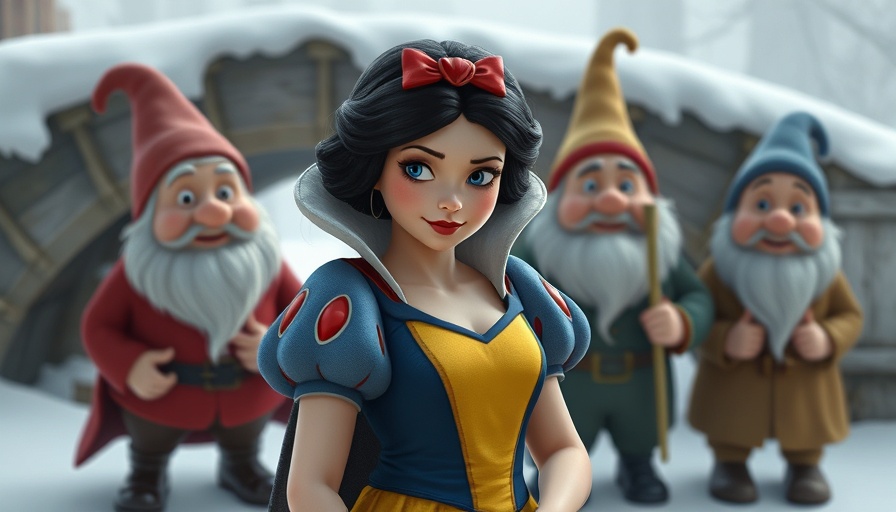
Rethinking a Classic: The New Snow White’s Cultural Impact
Disney's latest live-action adaptation of Snow White seeks to modernize a classic fairy tale but ends up sparking a cultural conversation about representation and narrative integrity. With this reboot starring Rachel Zegler and Gal Gadot, the film attempts to appeal to a contemporary audience through changes that have been met with mixed reviews.
Where Tradition Meets Innovation
Traditionally, Snow White's narrative revolves around her beauty and the peril it invites. This retelling attempts to shift the focus by giving Snow White a more active role in combatting the witch's tyranny, thus presenting her less as a damsel in distress and more as a warrior figure rallying for social justice. However, this approach has drawn criticism for feeling forced, overshadowing character depth in favor of ticking modernity boxes.
The Dilemma of Inclusion and Representation
One of the most contentious changes is the portrayal of the dwarves, who are reimagined as mo-cap characters rather than the traditional actors. While this change aims to modernize the representation of people with dwarfism, some viewers argue that it perpetuates an oversimplified, pseudo-progressive narrative that doesn’t quite hit the mark. Engaging diverse characters in meaningful roles is crucial, yet this adaptation veers into tokenism, revealing the struggles of balancing traditional storytelling with contemporary values.
Understanding Audience Expectations
Digital nomads, often seeking narratives that embrace cultural depth and inclusivity, may find themselves conflicted about this film. On one hand, it brings a familiar story to a new generation; on the other hand, the execution lacks authenticity, perhaps alienating those who appreciate genuine representation. This reboot illustrates the increasing demand for Hollywood to craft stories that resonate authentically with today's audiences while retaining the essence of what made the original beloved.
A Look at Future Fairy Tales
Future adaptations of classic tales must embrace bold, innovative storytelling without losing the heart of the narratives. Snow White's new journey invites us to reconsider not only how we tell these stories but also who gets to tell them. As filmmakers navigate the ever-evolving landscape of audience expectations and cultural sensitivities, the potential for a more thoughtful approach remains.
Finding the Right Balance
The traits that make Snow White enchanting art—its whimsy, danger, and romance—must blend seamlessly with today's values. A successful reimagining should invite audiences to ponder deeper themes of community, love, and power dynamics. The challenge lies in crafting a story that feels fresh yet familiar, enriching its legacy rather than replacing it.
This adaptation presents an opportunity to engage in dialogue about representation and cultural narratives. As audiences voice their perspectives, Disney and other filmmakers may take note of the complexity surrounding storytelling in an increasingly global society. With thoughtful exploration and attention to voice, future adaptations can find harmony between tradition and progress.
 Add Row
Add Row  Add
Add 




Write A Comment